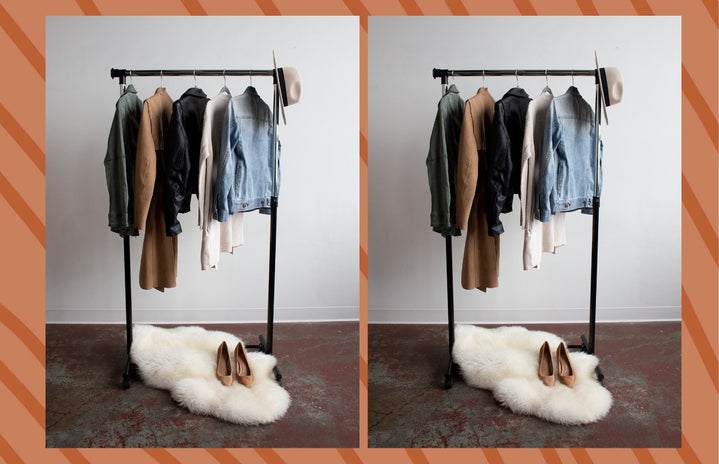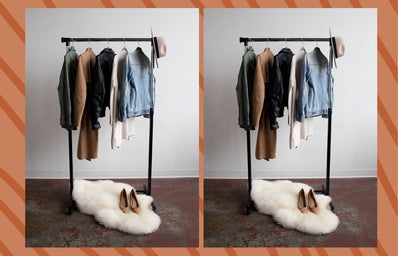Vintage has always been fashionable – even before Forever 21 and Macklemore’s song “Thrift Shop.”
“Vintage clothing is classic, its often higher quality and it’s unique,” says Stephanie Lew, Marketing Director of Buffalo Exchange. “When you own a vintage dress, you know you’re going to be the only gal at the party wearing that dress.”
We’re here to help collegiettes know what to scoop and what to skip when finding those vintage deals at Goodwill, Buffalo Exchange and other second-hand stores. Since the items are used, it’s important to know what’s safe to buy used. We talked to Stephanie from Buffalo Exchange as well as Samantha Suman, a sophomore at the University of California, Los Angeles and member of Fashion and Student Trends (FAST). The club describes itself as “a group of kids who really love clothes, blogging, networking and being creative.”
Thanks to Stephanie and Samantha, here are eight tips for bargain hunters.
1. Make sure it’s functional
Don’t buy a piece of clothing just because it looks cool or retro or unique. It has to be functional. If it doesn’t fit right, if it’s broken or stained, or if it’s really not your style, don’t buy it. Sometimes special items you find in thrift stores are tempting, but if it’s not you, odds are you won’t change your entire look by purchasing a non-functional item/
“Whenever you buy a new piece, take it home and start experimenting with different items from your closet,” Stephanie says.
Definitely play around with some new types of pieces, but just make sure it’s something you can actually wear that complements your daily style so it’s not sitting in your closet for months.
2. Remember that most stains aren’t fixable
It’s very unlikely that a stained piece of clothing from Goodwill will ever be wearable – it’s certainly not in style. Don’t get your hopes up on a cute beaded jacket with a coffee stain. Don’t risk your money buying it; if it’s stained, leave it on the shelf.
3. Ripped clothing does not mean an automatic no-go
Ripped clothing, on the other hand, can work.
“With ripped clothing, it depends,” she says. “If it’s jeans, you can work with that. Put a patch or keep the rip. But a silk top with a rip in it, you can’t fix that.”
So depending on the aesthetic you want from your clothing, finding cheaper items with tears can work for a grunge or skater vibe. Additionally, Suman says you can use ripped clothing to repurpose it into a scarf or headband.
Related: How to Reuse Clothes You Thought Were Ruined
4. Buy clothing with multiple uses
According to Samantha, the best way to make the most of your money is to buy items that are multi-purpose. Scarves can work as ascots or even has headbands, for example. This is a great way to mix up your wardrobe with simple patterned pieces that transcend different outfits.
And remember, by pairing different items together, Stephanie believes you can create a whole wardrobe of unique outfits by changing up accessories and the like. It’s just one way to make the best use of a piece of clothing, instead of just condemning it to belong to one outfit alone.
“Trading out an oversized cardigan for a blazer and flat ankle boots for heels can totally transform your look,” Stephanie says.
5. Focus on statement pieces
It’s best to find statement pieces at thrift stores opposed to simple, basic attire. It’s more likely to find the rare, unusual flare jeans or ‘50s jacket at a thrift store than at a department store, so use your time to find those really special items. Staples like black tank tops or white tees can be found anywhere.
“Thrift stores are for one-of-a-kind things,” Samantha says.
Stephanie reveals some customers come in for affordable basics like jeans and tees, but others come for funky and fun. “Buffalo Exchange is a great place to find sequin leggings and a neon top for an 80s dance party, a dress for your graduation or a casual outfit for a day on campus,” she says. “And, of course, it’s a great place to score vintage band tees, Doc Martens, moto jackets and all the accessories to match.”
6. Know what’s hygienic
One of Samantha’s favorite thrift store finds is a pair of black boots and despite other customers’ occasional worries, shoes seem fine to buy. However, she says to pass on the undergarments or bathing suits. Never get those second-hand. “I’d be okay with hats but not like fabric head pieces – nothing touching my hair,” Samantha says.
But that’s a personal preference – just make sure to wash all clothing you purchase before wearing to be safe and hygienic.
7. Double check the sizes
Stephanie also advises to be careful of sizes – brands’ sizes may be different than what you typically wear, so you don’t necessarily need to follow the tag labels. Since some pieces can be more than 50 years old and items come from dozens of different designers, you can’t always rely on being a size medium.
8. Be prepared to make a day of it
“You have to be okay with spending a long time sifting through piles and piles of clothes that aren’t necessarily organized,” Samantha says.
Thrift stores can be sorted by color or by purpose, and since every item is completely unique, it takes a long time to searching through every hanger to find the deals and exceptional items.
Of course you can go for a quick hour-long trip, but to really go hunting for thrift store finds, prepare to spend more than two hours trying on clothing and looking high and low for pieces that match your wardrobe. Don’t get discouraged, because a solid find is worth it.
If you get stuck on what to buy, ask employees in the store. Stephanie says employees at Buffalo Exchange are happy to help put together a stylish outfit with you.
Stephanie’s tip? “Embrace the thrill of the hunt! The beauty of secondhand is that you never know what gem you’ll find. If you go in with an open mind, you can really expand your style horizons.”

